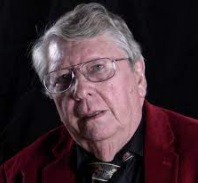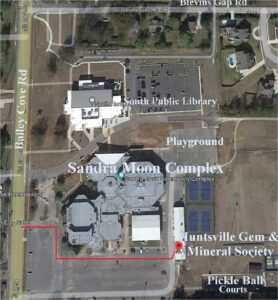The next meeting is November 18th, 6:30p-8p: Cosmic Distribution of Intact Biospheres
Dr. Richard B. Hoover will describe a mechanism operating in the Earth’s crust where biological action is supported by the creation of water from the serpentinization of deep rocks. This curious activity by very exotic bacteria is present in other places on Earth and in Deep Space, including the Moons of our other planets, and far beyond. Fascinating science. Please read his paper describing the research that led to this finding. (See November newsletter.)
 Dr. Hoover began his NASA career in 1966 at the George C. Marshall Space Flight Center (MSFC) in Huntsville, Alabama working on Fraunhoffer Diffraction and Scatter Fringe Interferometery. In 1997, Dr. Hoover initiated research on microfossils in ancient rocks and carbonaceous meteorites at NASA/MSFC and began a longstanding collaboration with Academician Alexei Yu. Rozanov, Director of the Paleontological Institute (RAS). Using state-of-the-art Scanning Electron Microscopes at NASA/MSFC, Dr. Hoover and RAS found well-preserved fossilized remains of cyanobacteria, acritarchs, diatoms, and other microalgae in diverse carbonaceous meteorites. Dr. Hoover pioneered the application of Energy Dispersive X-Ray Spectroscopy for measuring life-critical Bio-Element ratios (C/O; C/N; C/S and C/P) for distinguishing ancient indigenous bio-contaminants from modern ones.
Dr. Hoover began his NASA career in 1966 at the George C. Marshall Space Flight Center (MSFC) in Huntsville, Alabama working on Fraunhoffer Diffraction and Scatter Fringe Interferometery. In 1997, Dr. Hoover initiated research on microfossils in ancient rocks and carbonaceous meteorites at NASA/MSFC and began a longstanding collaboration with Academician Alexei Yu. Rozanov, Director of the Paleontological Institute (RAS). Using state-of-the-art Scanning Electron Microscopes at NASA/MSFC, Dr. Hoover and RAS found well-preserved fossilized remains of cyanobacteria, acritarchs, diatoms, and other microalgae in diverse carbonaceous meteorites. Dr. Hoover pioneered the application of Energy Dispersive X-Ray Spectroscopy for measuring life-critical Bio-Element ratios (C/O; C/N; C/S and C/P) for distinguishing ancient indigenous bio-contaminants from modern ones.

Unless indicated, all GeoSciences meetings are on the 2nd Thursday of the month in the Rocket City Jewelers room in the Huntsville Gem and Mineral Education Center, 7901 Bailey Cove Road SE. Please enter the South parking lot from Bailey Cove Road SE, and enter through the double glass front doors.

 Did You Know?
Did You Know?

